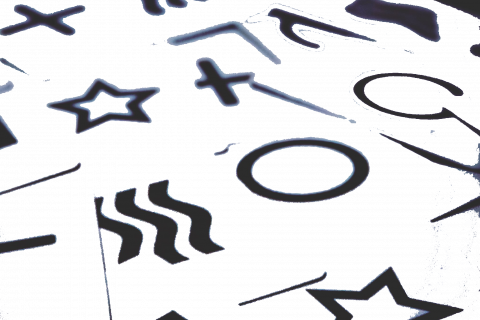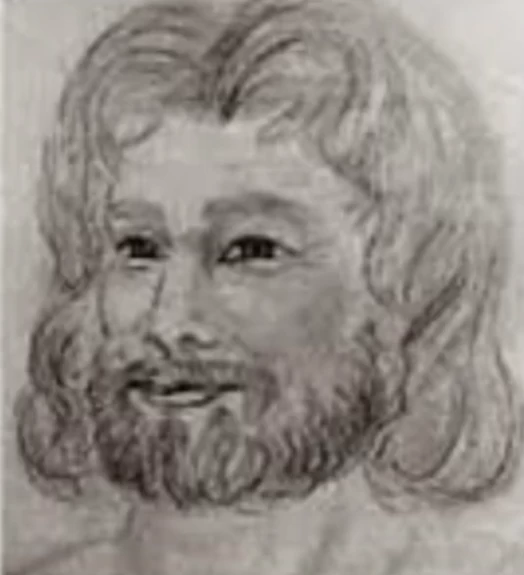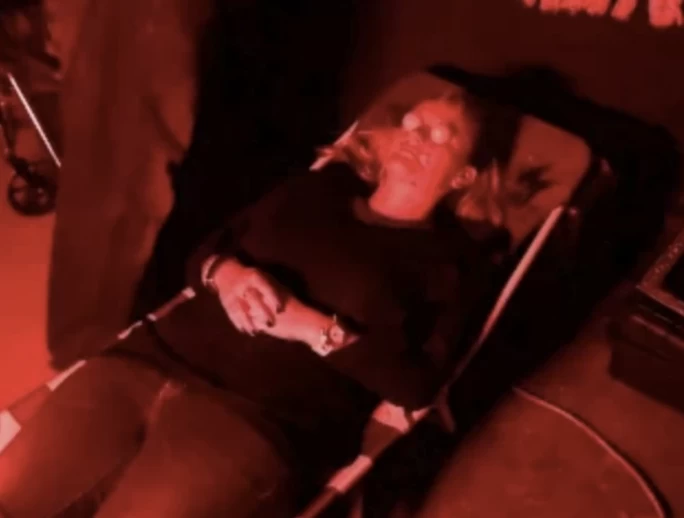

Telepathy tests paranormal investigators can try
Paranormal investigators often go out on investigations with the intention of communicating with spirits. As investigators, we know that a location isn't always haunted. Do we make it haunted? Are we the ghosts causing our own activity? Here are some telepathy experiments paranormal investigators can try on their next investigation.
Envelope EVP (commonly referred to as the learned jott) with a telepathy twist
EVP stands for Electronic Voice Phenomenon. It happens when a person uses a recording device such as a digital recorder to record audio. Upon playback, people hear voices or sounds they didn't hear with their ears. While there are a few explanations and possibilities as to what it could be, many people believe these voices are spirits who are trying to communicate with us.
Learned Jott sessions or envelope EVP as I call it is a set of procedures undertaken to ensure that when doing a paranormal investigation you are being 'led' by the questions being asked. For example, if you ask the question "What is your name?", you brain will be looking for a name response and suggestibility can occur. One of the methods used to combat this was what was called learned jott sessions. (I call it envelope evp and I wrote about it here)
- Investigators start by having a pile of around 10 blank cards. Throughout the day, they ask different people to write down a question on the card. The investigator is not to look at the question being written on the card. This is important! The card is then put in a sealed envelope. Once all 10 envelopes have been sealed with a written card, they are randomly numbered between 1 – 10. Remember none of the investigators should know what is written on the cards.
- During a session, the investigator holds up the envelope and asks the spirit to communicate the answer to the question inside the envelope. For example: ‘Can you please tell me what is the answer to question number 5?’. Remember the investigators do not know what the question is so they cannot predict what the answer will be.
- Now have the investigators review the audio. They are each to write down any responses they believe they have heard. Up until this point, the envelopes have still not been opened. Once the audio has been reviewed, open the envelopes and read the question and compare it to the answer that the EVP has given you. Is there a match? If there is, you know that there is no contamination through the power of suggestion if you have conducted this experiment properly.
Now the above is based on the concept of spirit communication, but what if you changed it up to incorporate telepathy instead? So instead of trying to get responses from a spirit, you were trying to project or influence someone else using telepathy. To do this you could follow a similar procedure like the following as an example:
- A chosen investigator who will act as the sender will pick something small and flat to be put inside an envelope. It could be a photo or a quote written on a piece of paper. It should be something random and not related to the property or the people so there is much less chance of a coincidental guess.
- The item is sealed in an envelope.
- The sender will then try to mentally project the contents inside to the other investigators throughout the night. You could keep the envelope in your pocket or even pass it around to others (so long as they can't see through the envelope).
- At the end of the night, ask each person to write down or draw what they have seen.
- Reveal the results and compare them against the item inside
What would make it really interesting would be if the item was directly referenced during the investigation itself. Now of course if it were to reveal itself during the investigation, there is no way to know if it was an act of telepathy or if you have some impressive spirit communication going on, but you are the investigators so it is up to you to try and find that out by recreating this.
The Philip experiment
In 1972, the Philip Experiment was conducted where a group of Canadian parapsychologists met on a weekly basis for over a year with the thought that just by focusing on pictures and a story about a made-up 'ghost', that you could manifest this ghost just with a group of people focusing on this information. The experiment was led by a world-renowned self-proclaimed expert on poltergeists, Dr. A.R.G Owen. His goal was simple. Create a group of people (none of which were mediums or sensitive to the paranormal) and have them use their collective thought to see if they could conjure a ghost to appear. After a couple of years and a change of methods, they found the experiment to be a success and felt that they had conjured their own ghost just by thinking about them.
To read more about Philip: https://llifs.com.au/blog/the-phillip-experiement/

I often wonder if some popular paranormal locations have created their own 'Philip' just by running tours every weekend and talking about the same stories and characters. often use Black Rock House which is a location I run paranormal tours from, as an example to get my point across. We take our guests into a room and explain that this is Annie's room and that she was around 56 years old and passed away in her sleep. She was a servant and liked to cook bread etc. I have a room of people now focused on her story. We start asking questions like “Annie did you bake some bread today?” Is the activity that follows happening because Annie is in the room trying to communicate with us, or is it because we are so focused on her story we are unknowingly making it happen? Is the ghost of Annie really just us?
This is where you could try this experiment yourself. Now I must point out that anyone involved in this needs to know they are involved. This is designed to test telepathy not trick people into thinking there is a ghost where there is not one. Much like Philip, come up with a back story, the more detailed the better. Sit with the same people on a regular basis and communicate as you normally would using your methods as if you were communicating with your own Philip.
Psychic Projection
I first became aware of this experiment when doing an event with Brian J Cano from Haunted Collector and later Paranormal Caught on Camera. It was something he created some time ago. It is based on the concept of the Phillip Experiment mentioned above.
- To complete this experiment, you need to find a comfortable quiet space. There is no set number of people needed for this experiment. It may work with only 1 person or it may work with 10. It probably depends on a lot of things, but it would be worth trying it with different numbers of people.
- Find a word that is significant to the members of the room. Brian explained that in his experiences when the word had some sort of significance to the group, he had a higher success rate as there is an emotional attachment to the word. It could be something funny that has made everyone laugh or it could be the name of someone in the group. It is up to you which word to choose.
- Aim to record for about 1 minute. The group will sit in silence and purely concentrate on the word that they want to appear on the recording. (Silently in your head, don’t chant the word). You can close your eyes or you can focus on the recorder, whatever you are more comfortable doing.
- At the end of the one minute, review your recording. Did the word appear? When reviewing, of course, you must be very aware of audio pareidolia. When you are reviewing the audio, you are searching for the one particular word you were trying to project so you are more likely to interpret sounds to be the word you are looking for. It is the nature of our brain. It would have to be a class A EVP that is easily recognizable by anyone listening to it to even be considered a success due to this influence.
It is not an experiment I am told that works all the time. I have never had it work myself, but other investigators have had success. In fact, over many years, Brian had said it only worked a handful of times out of the hundreds of times he had done it at his events. I suppose it makes it all the more interesting when something comes through.

If you are worried about suggestibility with this one, you could incorporate elements of the envelope experiment.
Assign 2 groups, senders and reviewers.
The group of senders will decide on the word or focus on a picture, symbol etc with the goal of recording their thoughts on the recorder.
As above, record silently for one full minute while the senders concentrate on their projection. The reviewers should not be in the room at the time, it should just be the senders.
After the minute is up, the senders leave the room and the reviewers will review the audio. Each person should write down what they hear, without telling the other person. In the end, bring both the senders and the reviewers together to compare the results. While it would be rare for it to happen, imagine if you had various reviewers pick up the same word without knowing what it was and without hearing one of the other reviewers guess it first?
Ganzfeld Experiment
Ganzfeld is coined from the term ‘total field or whole field’. Ganzfeld is german for ‘complete field’. In the same vein as the Zener trials, the Ganzfeld experiment aimed to prove if a person could mentally transmit an image to another person. The difference here is that a form of sensory deprivation was used. It was based on the studies of German psychologist Wolfgang Metzger who in the 1920s and 1930s found through his experiments that when subjects focused on a particular field of vision that was plain with no features, they would start to hallucinate and see images that were not there and their brain activity also changed during this time. It works on the assumption that psi abilities are perhaps blocked by an outside influence, in this case, our surroundings both sound and visual. Was it just the brain hallucinating or was it allowing the psi abilities to present themselves in the form of visions?
To read more detail about the results of the original trials visit: https://llifs.com.au/blog/the-ganzfield-experiment/
There were three people used in the original experiment. A sender, a receiver, and an experimenter. The receiver was placed in a comfortable chair in a soundproof room. Headphones were worn that play white or pink noise. Over the eyes, cut in half ping pong balls were used with a red light shining on their face. Before the testing began, a relaxation tape was played to put the receiver in a relaxed state. The experiment then begins. The receiver is asked to say out loud what they are seeing or feeling as they are to keep their eyes open. They are asked to do this for a few minutes before the room is sealed shut. They are asked to keep verbalizing what they see and feel. The experimenter has direct communication with this room and can see and hear everything and they can communicate to the receiver if needed.
The sender is in another room which should be soundproofed. They have 4 clear packets that are called a target. The packets contained either a picture or a short video and should be very different from one another. The sender is to concentrate to try and see if they can telepathically send the image or video to the receiver in the other room. It is up to the sender to randomly select which packet they choose to 'send'. The whole process took around 15-30 minutes per session. At the end of the session, the receiver is then shown all 4 of the targets. They were then asked to rate which one matches any mental pictures they received during the time they were under sensory deprivation. Because there was a ¼ chance they could randomly guess the correct target, a 25% success rate was a baseline figure. Hit rates of the initial experiments were around 34 - 38%.

Somewhere along the way, the experiment has been adapted for a variety of things. Some people call it a ‘mind hack’ and use drugs to hallucinate (according to the forums of the internet, something I do not recommend at all). Another use is during a paranormal investigation. Often, investigators use this method as a form of spirit communication and not telepathy. To do this they usually follow these steps
- Instead of putting people in separate rooms, you are obviously in one room, preferably one that has reports of paranormal activity.
- The same sort of process applies in having the sitter sit or lie comfortably in a chair. A red light is pointed onto them and white ping pong balls are used over their eyes.
- Noise cancellation headphones are used which play white noise.
- You obviously have someone to watch over the experiment and should not be done alone, just for your own safety. They can stop the experiment if you get too distressed. Paranormal experience or not, if you are hallucinating, some people become distressed. 10 minutes is usually a good time frame, but you can go for shorter or longer.
During this time the receiver is opening themselves to spirit communication. What if you took the experiment back to its telepathy roots? While following the above process, have someone in another room again with a picture or symbol written on a piece of paper. While the person is in the chair doing the experiment, have a sender in another room trying to telepathically send an image to the person doing the test. Again it should be something completely random and not easy to guess. At the end of the 10 minutes have the person draw or write down anything they saw and compare the results.
If this seems familiar but different, you might be thinking of what many investigators called the Estes experiment which is a slight take on the above.
Modified Estes Experiment
The Estes experiment is something you commonly see on the TV show Kindred spirits and a method that has become much more popular over the years. Again it is used mainly for spirit communication where a person will sit with a spirit box running, have noise-cancelling headphones plugged in and wear a blindfold so all they are hearing is what is coming through the spirit box. They are to call out anything they hear and because they can't see or hear what is happening in the room when the answers match up to what is being asked or happening in the room, some believe it is an answer from spirit. What if we adapted this popular method for telepathy?
Using the same above process, you could have someone hooked up to the headphones, the spirit box and the blindfold. You also need a sender and an observer. The observer should be writing down or even filming all responses so they can be checked later. The sender should be focusing again on an image, symbol or phrase and try to telepathically communicate this to the receiver. At the end of the session, ask them to write or draw what they saw and have the observer read out any responses they received. While some may believe the answers that come through on the spirit box are from spirit, what if much like the psychic projection experiment above, someone was able to project their thoughts to a piece of equipment?
These are just some basic ideas and in some ways just a bit of a twist on older parapsychology experiments. You don't have to follow them to the letter, you might have a different way or maybe some new ideas. As investigators, we know that a location isn't always haunted. Do we make it haunted? Are we the ghosts causing our own activity? This is just one of many ways to start looking at how powerful the human mind could really be and trying something different in the process!
If you enjoy LLIFS, consider buying me a book (otherwise known as buy me a coffee but I don't drink coffee and I LOVE books). Your donation helps to fund the LLIFS website so everyone can continue to access great paranormal content and resources for FREE!

Top pages with similar subjects
Don't forget to follow the Facebook page for regular updates
Join the mailing list to receive weekly updates of NEW articles. Never miss an article again!
Buy the latest and past issues Haunted Magazine
Check out the books written by LLIFS